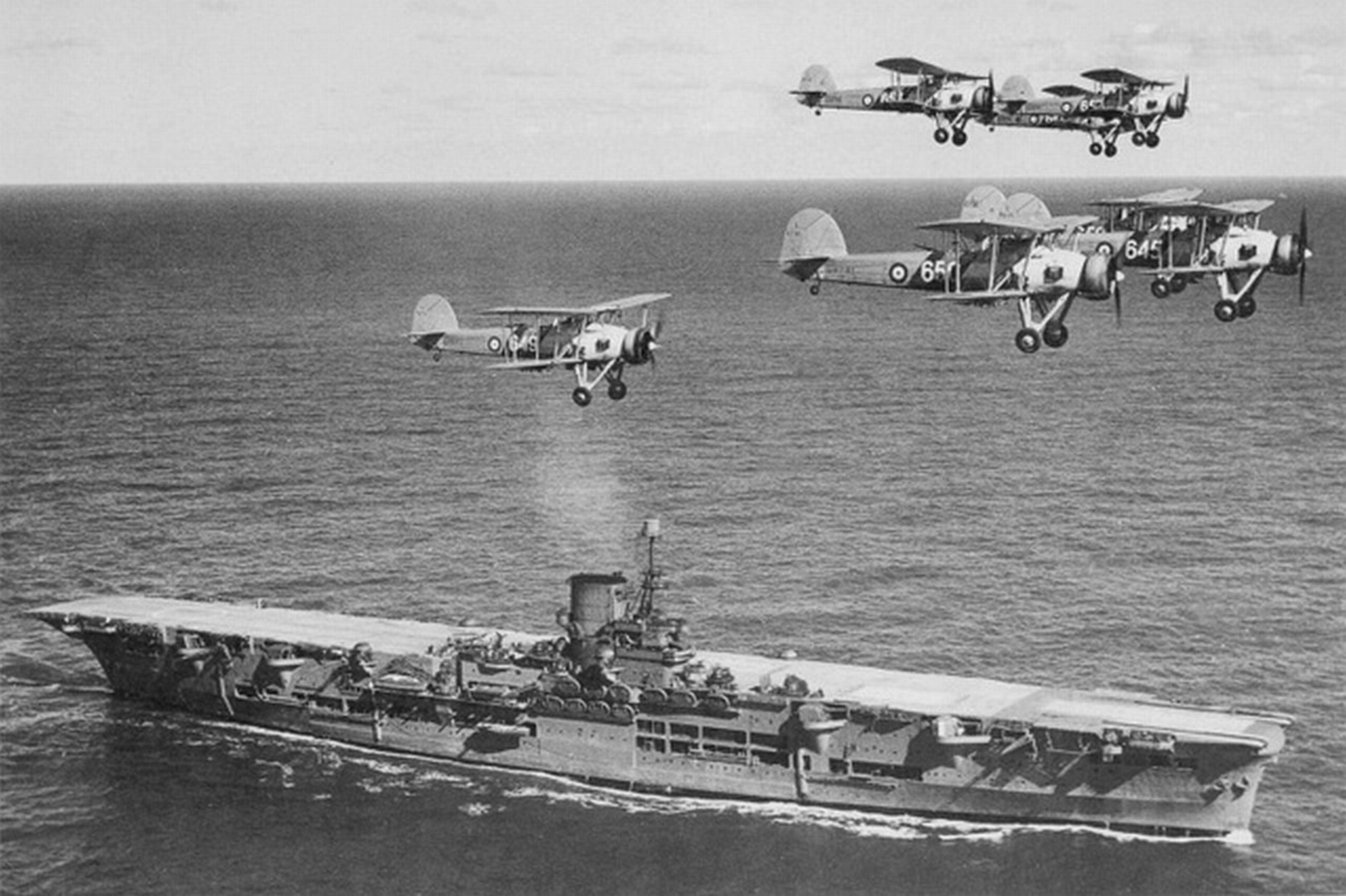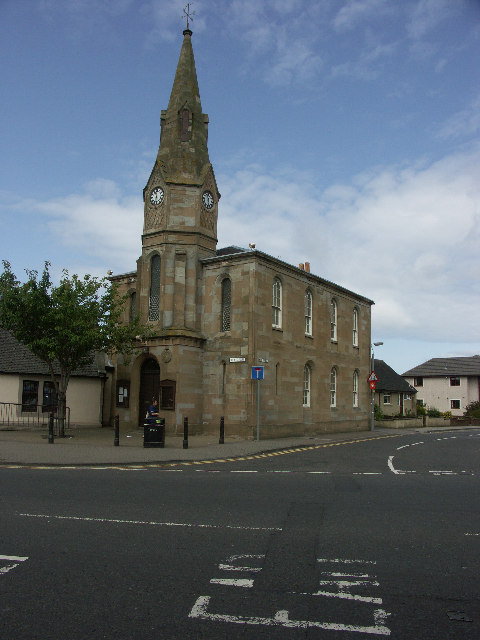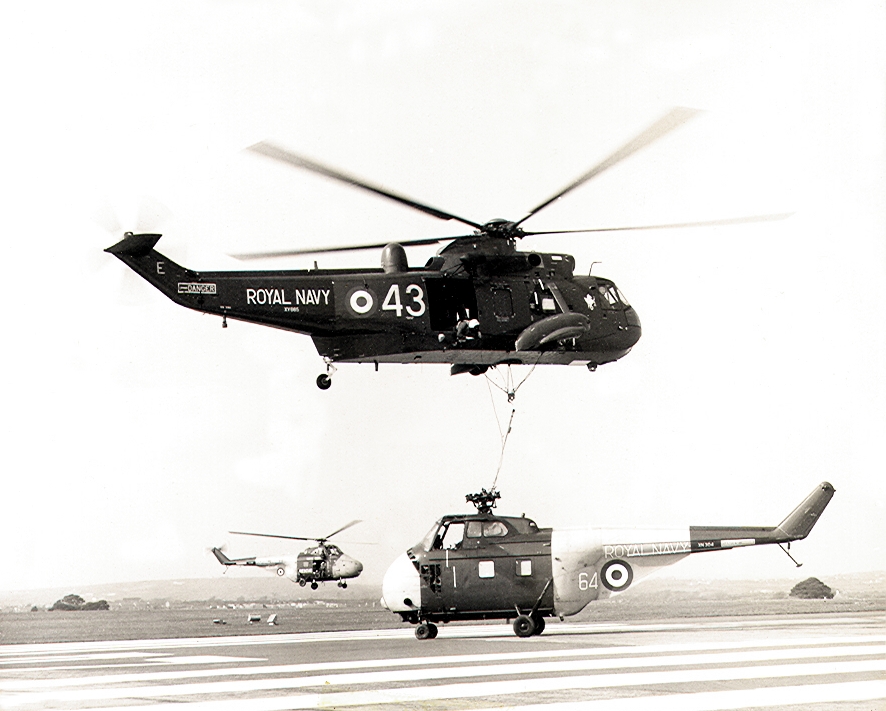|
824 Naval Air Squadron
824 Naval Air Squadron is a Royal Navy Fleet Air Arm squadron based at RNAS Culdrose and currently operating the AgustaWestland Merlin HM2 Operational Conversion Unit. It trains aircrew in Anti-Submarine warfare and Airborne Surveillance and Control. History The squadron was originally formed on 3 April 1933 as a Spotter Reconnaissance squadron. During World War II, the squadron carried out various duties, such as convoy protection, bombing raids, spotting for gunnery bombardments and attacks on enemy destroyers. The squadron took part in the Battle of Taranto on 11 November 1940, where together with aircraft from 813, 815 and 819 squadrons flying from HMS Illustrious, it successfully attacked the Italian Battle Squadron. It was disbanded 10 times between 1934 and 1970, in that time it was equipped with the Fairey Seal, Fairey Swordfish, Fairey Barracuda, Fairey Firefly and finally the Fairey Gannet. The squadron participated in the Falklands War, later responsible for tria ... [...More Info...] [...Related Items...] OR: [Wikipedia] [Google] [Baidu] |
Fleet Air Arm
The Fleet Air Arm (FAA) is one of the five fighting arms of the Royal Navy and is responsible for the delivery of naval air power both from land and at sea. The Fleet Air Arm operates the F-35 Lightning II for maritime strike, the AW159 Wildcat and AW101 Merlin for commando and anti-submarine warfare and the BAE Hawk as an aggressor. The Fleet Air Arm today is a predominantly rotary force, with helicopters undertaking roles once performed by biplanes such as the Fairey Swordfish. The Fleet Air Arm was formed in 1924 as an organisational unit of the Royal Air Force, which was then operating the aircraft embarked on RN ships—the Royal Naval Air Service having been merged with the Army's Royal Flying Corps in 1918 to form the Royal Air Force—and did not come under the direct control of the Admiralty until mid-1939. During the Second World War, the Fleet Air Arm operated aircraft on ships as well as land-based aircraft that defended the Royal Navy's shore establishmen ... [...More Info...] [...Related Items...] OR: [Wikipedia] [Google] [Baidu] |
Fairey Seal
The Fairey Seal was a British carrier-borne spotter-reconnaissance aircraft, operated in the 1930s. The Seal was derived – like the Gordon – from the IIIF. To enable the Fairey Seal to be launched by catapult from warships, it could be fitted with floats. Service life and operations The Seal was designed and built by Fairey Aviation. It first flew in 1930 and entered squadron service with the Fleet Air Arm (FAA) in 1933. Ninety-one aircraft were produced. The FAA started to replace it with the Swordfish Mk1 from 1936. By 1938 all FAA torpedo squadrons had been entirely re-equipped with the Swordfish. The Seal was removed from front-line service by 1938, but remained in secondary and support roles. By the outbreak of the Second World War, only four remained in service. The type was retired fully by 1943. The type was last used in India as an instructional airframe from the Royal Navy Photographic Unit. The RAF also operated the Seal as a target tug. Twelve aircraft we ... [...More Info...] [...Related Items...] OR: [Wikipedia] [Google] [Baidu] |
Hawker Sea Hurricane
The Hawker Hurricane was a British single-seat fighter aircraft designed and predominantly built by Hawker Aircraft Ltd. Some versions were built in Canada by the Canada Car and Foundry Co Ltd British variants Hurricane Mk I ; Hurricane Mk I (Early production) The first Mk I production machines were ready fairly quickly, with deliveries starting in December 1937. These early aircraft featured fabric-covered wings, and a wooden, two-bladed, fixed- pitch propeller. Initially the tailwheel was designed to be retractable; early on it was discovered that the Hurricane needed a larger rudder area to improve the control characteristics during a spin. To this end the lower part of the rudder was extended and a distinctive ventral "keel" was added to the rear fuselage. The tailwheel was now fixed. Early Hurricanes lacked armour or self-sealing tanks. They used "ring and bead" gunsights, with the ring being mounted above the instrument panel and the bead mounted on a post above the en ... [...More Info...] [...Related Items...] OR: [Wikipedia] [Google] [Baidu] |
Fairey III
The Fairey Aviation Company Fairey III was a family of British reconnaissance biplanes that enjoyed a very long production and service history in both landplane and seaplane variants. First flying on 14 September 1917, examples were still in use during the Second World War. Design and development The prototype of the Fairey III was the N.10 floatplane, which was designed and built in 1917 by Fairey Aviation (along with the smaller N.9) to meet Admiralty Specification N.2(a) for a carrier-based seaplane for the Royal Naval Air Service during the First World War. N.10, also known by its constructor's number F.128 was a two-bay biplane with folding wings and powered by a 260 hp (190 kW) Sunbeam Maori engine. It first flew from the Port Victoria seaplane station on the Isle of Grain, Kent on 14 September 1917.Taylor 1988, p.71. Following tests both as a floatplane and with a conventional wheeled undercarriage, production orders were placed for two versions both powere ... [...More Info...] [...Related Items...] OR: [Wikipedia] [Google] [Baidu] |
820 NAS
820 Naval Air Squadron is a Royal Navy Fleet Air Arm carrier-based squadron flying the AgustaWestland Merlin HM2 in an Anti-Submarine role from RNAS Culdrose. The Squadron was formed at RNAS Gosport on 3 April 1933 with the transferral of the Fairey III aircraft from 450 Flight and half of 445 Flight of the Fleet Air Arm of the Royal Navy. History Second World War The squadron's first assignment on its formation was to carry out spotter-reconnaissance duties for the aircraft carrier . They were later re-equipped with Fairey Seals and Blackburn Sharks, eventually receiving Fairey Swordfish in autumn 1937. The squadron was reassigned in November the following year to the new aircraft carrier . The squadron operated from ''Ark Royal'' for the next three years, initially on anti-submarine duties, but later as surface search and torpedo-attack aircraft. The squadron went with ''Ark Royal'' to the Atlantic, and by April 1940 they were supporting Allied operations during the Norwegi ... [...More Info...] [...Related Items...] OR: [Wikipedia] [Google] [Baidu] |
814 NAS
814 Naval Air Squadron or 814 NAS, nicknamed the Flying Tigers, is a squadron of the Royal Navy Fleet Air Arm. It is currently equipped with the AgustaWestland Merlin HM2 anti-submarine warfare helicopter and is based at Royal Naval Air Station (RNAS) Culdrose in Cornwall. The squadron was formed in December 1938 and has been disbanded and reformed several times. Role and equipment 814 Naval Air Squadron operates the AgustaWestland Merlin HM2 anti-submarine warfare (ASW) helicopter and is based at RNAS Culdrose in Cornwall. In addition to its ASW role, it has capabilities in anti-piracy operations, delivery of humanitarian aid, casualty evacuation, medium lift under-slung loads (up to 3.8 tonnes), search and rescue, counter drugs and maritime patrol and security operations. The Merlin can be armed with BAE Systems Sting Ray torpedoes, Mark 11 depth charges and the Browning M3m .50 calibre machine gun. The squadron has over 200 personnel assigned to it and is the larges ... [...More Info...] [...Related Items...] OR: [Wikipedia] [Google] [Baidu] |
Anti-Submarine Warfare
Anti-submarine warfare (ASW, or in older form A/S) is a branch of underwater warfare that uses surface warships, aircraft, submarines, or other platforms, to find, track, and deter, damage, or destroy enemy submarines. Such operations are typically carried out to protect friendly shipping and coastal facilities from submarine attacks and to overcome blockades. Successful ASW operations typically involved a combination of sensor and weapon technologies, along with effective deployment strategies and sufficiently trained personnel. Typically, sophisticated sonar equipment is used for first detecting, then classifying, locating, and tracking a target submarine. Sensors are therefore a key element of ASW. Common weapons for attacking submarines include torpedoes and naval mines, which can both be launched from an array of air, surface, and underwater platforms. ASW capabilities are often considered of significant strategic importance, particularly following provocative instanc ... [...More Info...] [...Related Items...] OR: [Wikipedia] [Google] [Baidu] |
Prestwick
Prestwick ( gd, Preastabhaig) is a town in South Ayrshire on the west coast of Ayrshire in Scotland about southwest of Glasgow. It adjoins the larger town of Ayr to the south on the Firth of Clyde coast, the centre of which is about south, and the small village of Monkton to the north. It had a population of 14,901 at the 2011 census. The town is served by Glasgow Prestwick Airport, which serves many European destinations as well as transatlantic and other international cargo flights. The town was the first home of the Open Golf Championship, which was played on the Prestwick Old Course from 1860 to 1872. History Prestwick's name comes from the Old English for, ''priest's farm'': ''preost'' meaning "priest" and ''wic'' meaning "farm". The town was originally an outlying farm of a religious house. George T. Flom suggested that the name was of Old Norse origin. In this case, it would mean "priest's bay". From Robert the Bruce to James VI, King of Scots, numerous Kings ... [...More Info...] [...Related Items...] OR: [Wikipedia] [Google] [Baidu] |
Westland Sea King
The Westland WS-61 Sea King is a British licence-built version of the American Sikorsky S-61 helicopter of the same name, built by Westland Helicopters. The aircraft differs considerably from the American version, with Rolls-Royce Gnome engines (derived from the US General Electric T58), British-made anti-submarine warfare systems and a fully computerised flight control system. The Sea King was primarily designed for performing anti-submarine warfare (ASW) missions. A Sea King variant known as the Commando was devised by Westland to serve as a troop transport. In British service, the Westland Sea King provided a wide range of services in both the Royal Navy and the Royal Air Force. As well as wartime roles in the Falklands War, the Gulf War, the Bosnian War, the Iraq War and the Afghanistan War, the Sea King is perhaps most well known in its capacity as a Royal Navy Search and Rescue (red and grey livery) and RAF Search and Rescue Force (yellow livery) helicopter. The S ... [...More Info...] [...Related Items...] OR: [Wikipedia] [Google] [Baidu] |
Falklands War
The Falklands War ( es, link=no, Guerra de las Malvinas) was a ten-week undeclared war between Argentina and the United Kingdom in 1982 over two British dependent territories in the South Atlantic: the Falkland Islands and its territorial dependency, South Georgia and the South Sandwich Islands. The conflict began on 2 April, when Argentina invaded and occupied the Falkland Islands, followed by the invasion of South Georgia the next day. On 5 April, the British government dispatched a naval task force to engage the Argentine Navy and Air Force before making an amphibious assault on the islands. The conflict lasted 74 days and ended with an Argentine surrender on 14 June, returning the islands to British control. In total, 649 Argentine military personnel, 255 British military personnel, and three Falkland Islanders were killed during the hostilities. The conflict was a major episode in the protracted dispute over the territories' sovere ... [...More Info...] [...Related Items...] OR: [Wikipedia] [Google] [Baidu] |
Fairey Gannet
The Fairey Gannet is a carrier-borne aircraft that was designed and produced by the British aircraft manufacturer the Fairey Aviation Company. It was developed for the Royal Navy, being the first fixed-wing aircraft to combine both the search and strike portions of anti-submarine warfare (ASW) operations to be operated by the Fleet Air Arm (FAA). The Gannet was originally developed to meet a Second World War era requirement for a dual-role ASW and strike to equip the FAA.Taylor 1974, pp. 356–357. It was a mid-wing monoplane with a tricycle undercarriage and a crew of three, with a double turboprop engine driving two contra-rotating propellers. On 19 September 1949, the prototype Gannet performed its maiden flight. Four years later, it was brought into regular service with the FAA. The service would use the type from the majority of its aircraft carriers throughout the Cold War. Various export customers were also secured for the Gannet, including the Royal Australian Navy ... [...More Info...] [...Related Items...] OR: [Wikipedia] [Google] [Baidu] |








